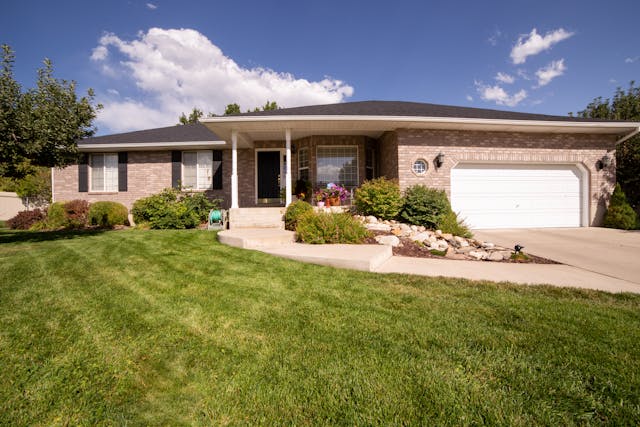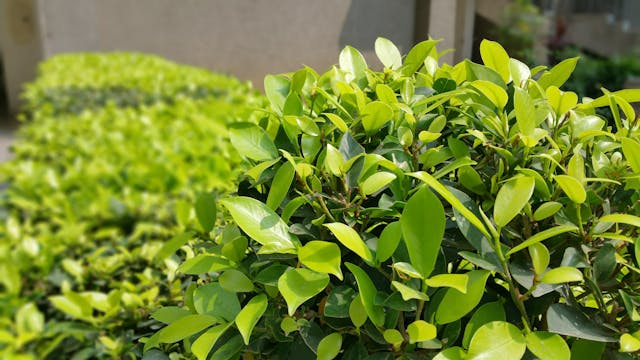As climate change worsens and hot and dry areas are struggling more than ever before with temperatures and limited water sources, there is an increasing need for sustainable landscape design that prioritises longevity and environmental harmony over the long term. New approaches are required to tackle these challenges by prioritising resilience and ecological balance in conservation measures while making outdoor spaces look good and functional. This post explores the guidelines and strategies for designing landscapes that thrive in dry climates. Providing environmental benefits as well as visual enhancements for both communities and individual homeowners.
Know the Environment
Before you start any landscaping project, you need to know the environment. Knowing the weather patterns, soil type, local plants and water availability is key to designing. Extreme temperatures, rainfall trends, soil type and wind direction all play a part in choosing plants and their placement. Plants that can handle varying conditions are needed for hot days and cool nights. Knowing the rainfall helps with irrigation planning. In areas with rocky soils adjustments may be needed to improve water retention and soil quality. In areas with strong winds water loss and soil erosion is more prevalent; so windbreaks and careful planting is crucial for sustainability and landscape design that fits with the environment.
Water Conservation
Water scarcity is top of the agenda in hot and dry climates so conservation is key. Sustainable landscaping must incorporate water efficient practices for long term viability. Xeriscaping is a landscaping approach that minimises irrigation needs by using drought tolerant plants, reducing lawn areas and improving soil moisture retention. Efficient irrigation systems like drip irrigation deliver water directly to the plant roots, minimal waste. Rainwater harvesting systems collect and store rainfall for later use, mulching retains soil moisture and regulates temperature. Greywater reuse, using household wastewater for irrigation, is an additional source of water. By incorporating these techniques, sustainable landscapes can thrive with minimal water.Rain gardens and bioswales are also important for managing water in dry landscapes. They capture runoff, filter pollutants and slowly infiltrate water into the soil, recharging groundwater. Add moisture retaining materials like compost and organic mulch to reduce evaporation and retain soil moisture for longer. If you already have an irrigation system, regular sprinkler system repair ensures water is delivered efficiently, no leaks and no wasted water. Educate homeowners and landscapers on good water practices for long term conservation.
Native and Drought-Resistant Plants
Planting is all about sustainability. Native plants are perfect for the climate and use less water. Drought-resistant ones like agave, lavender, mesquite trees and ornamental grasses add to the landscape’s resilience. Plants are grouped by water requirements to maximize irrigation efficiency. Plants with deep roots can access underground moisture and don’t need to be watered as often. Landscapes can be lush with native and drought-tolerant plants and using less water.
Plus polyculture planting—where multiple plant species coexist—creates a more resilient landscape by mimicking natural ecosystems. Such diversity improves soil health, attracts beneficial pollinators and reduces plant diseases. Vegetative buffers around properties can also retain moisture, reduce erosion and create a cooler microclimate.
Soil Management and Erosion Control
Healthy soil is key to better plant growth and water retention. In arid areas soil gets depleted through erosion and nutrient losses. Organic matter like compost and mulch increases soil’s water retention ability. Methods for soil erosion control are terracing, swales and retaining walls that prevent soil loss and water runoff. Cover cropping with ground cover plants stabilizes the soil and minimizes evaporation. A healthy soil ecosystem means healthier plants and less dependence on artificial irrigation.
Another way is to add soil amendments like biochar which increases water holding capacity and microbial activity. This enriches soil fertility and is long term sustainable even in arid environments. By having a robust soil ecosystem landscape designers can improve plant resilience and ecosystem function.
Creating Microclimates for Comfort and Growth
Designing microclimates in the landscape can provide relief from extreme temperatures and increase plant survivability and human comfort. Strategically planting trees and shrubs can create shade and reduce heat stress on plants and create cooler outdoor spaces. Shade structures like pergolas and green walls also reduce heat buildup. Adding water features even small ones helps to moderate temperatures and increase humidity making outdoor spaces more livable. And using reflective surfaces for patios and paths can reduce the heat island effect. Light colored stone or permeable pavers absorb less heat than traditional concrete so spaces are cooler and more livable. Windbreaks like hedges or vertical gardens also helps to stabilize the microclimate by reducing wind exposure and evaporation.
Sustainable Hardscapes
Hardscapes like pathways, patios and retaining walls should align with sustainability goals. Permeable surfaces like gravel and porous concrete allow water to soak into the ground, reducing runoff and recharging groundwater. Using locally sourced materials like regional stone and reclaimed wood minimizes the environmental impact of construction. Light coloured materials reflect heat, keeping outdoor spaces cool. These sustainable choices means hardscapes contribute to rather than detract from the environment.
One way to do this is to incorporate low maintenance landscaping into hardscape design using durable materials that need minimal maintenance and are sustainable. Features like green roofs and vertical gardens can further enhance sustainability by insulating buildings, improving air quality and promoting biodiversity. Used well hardscapes complement the surrounding eco system and provide functionality and durability.
Biodiversity and Habitat Creation
A truly sustainable landscape supports biodiversity by providing habitat for local wildlife. Planting a variety of species attracts pollinators and beneficial insects, birdhouses, bee hotels and water sources encourages wildlife to visit. Preserving natural areas in the landscape allows native ecosystems to thrive. Biodiversity not only improves ecological health but makes outdoor spaces look better too.
Habitat corridors like hedgerows and native plant strips create linkages between green spaces allowing wildlife to move through landscapes. This strengthens ecosystems by promoting genetic diversity and reducing habitat fragmentation. Reducing chemical pesticides and herbicides means a healthier more sustainable environment for all living things.
Community Engagement in Sustainable Landscaping
Sustainable landscapes go beyond individual properties and into the community. Encouraging local people to get involved in sustainable gardening can create a culture of conservation. Community gardens, xeriscaping initiatives and public awareness campaigns spread the word and inspire eco friendly landscaping. Municipal policies that promote water efficient landscaping and native plant use supports sustainable development goals.
Homeowner associations and urban planners can also implement guidelines that prioritize environmentally responsible landscaping. Together we can create green spaces that are functional landscapes and ecological sanctuaries. Sustainable landscaping in hot dry climates means understanding the environment and conservation. Water efficiency, right plants, soil health and functional hardscapes will create landscapes that are robust and beautiful. With planning and creativity we can create landscapes that can withstand the harsh climate and be sustainable for generations to come. By working with nature and adapting to the challenges we can grow outdoor spaces for the long haul.




